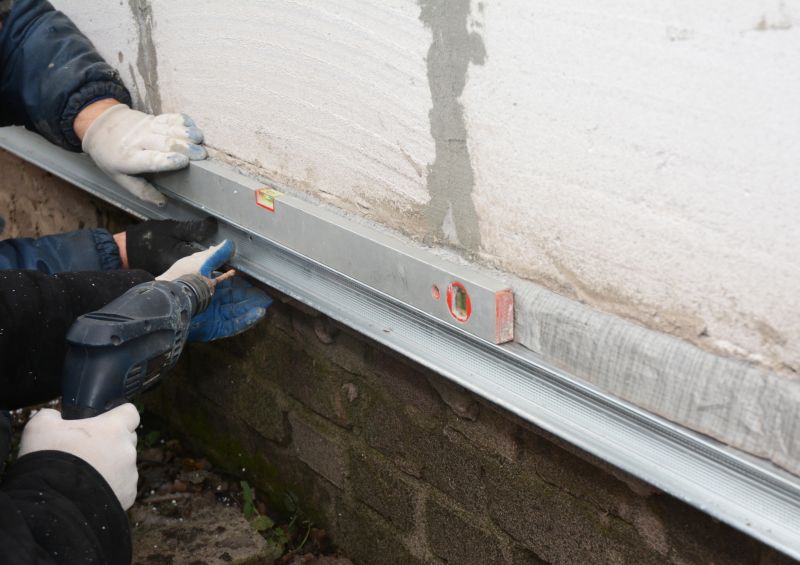Popular Foundation Repair Solutions for Common Structural Concerns
Select from trusted products designed to effectively address cracks, settling, and other foundation issues.
 Foundation repairs are a critical aspect of maintaining the structural integrity of a building. When issues such as cracking, settling, or shifting are observed, it is essential to explore a variety of products designed to address these concerns effectively. These products range from simple repair patches to advanced underpinning systems, each suited to different types of foundation problems and building conditions. Proper selection and application of the right products can help stabilize a foundation, prevent further damage, and extend the lifespan of the structure.
Foundation repairs are a critical aspect of maintaining the structural integrity of a building. When issues such as cracking, settling, or shifting are observed, it is essential to explore a variety of products designed to address these concerns effectively. These products range from simple repair patches to advanced underpinning systems, each suited to different types of foundation problems and building conditions. Proper selection and application of the right products can help stabilize a foundation, prevent further damage, and extend the lifespan of the structure.
Types of Products For Foundation Repairs
Hydraulic Push Piers
Hydraulic push piers are driven into the ground beneath a foundation to provide support and lift, often used in cases of settlement or sinking.
Helical Piles
Helical piles are screw-like steel shafts that can be installed quickly and are suitable for various soil conditions, offering support and stabilization.
Polyurethane Injection Foam
Polyurethane injections are used to fill cracks and voids in the foundation, helping to stabilize and prevent further movement.
Carbon Fiber Reinforcement
Carbon fiber strips or fabrics are applied to crack surfaces to reinforce and prevent further cracking in concrete foundations.
Underpinning Systems
Underpinning involves extending the foundation depth or width to improve stability, often using piles or concrete blocks.
Slab Jacking and Mudjacking
This process lifts sunken concrete slabs by injecting a grout mixture beneath the slab to restore levelness.
Steel Support Beams
Steel beams are used to support or reinforce existing foundation structures, especially in areas of sagging or shifting.
Concrete Piers
Precast or poured concrete piers serve as supports beneath a foundation, providing stability in various soil conditions.
Soil Stabilization Products
Products designed to improve soil strength and reduce movement, often used in conjunction with other repair methods.
Foundation Repair Patches
Epoxy or other patching compounds are used to seal cracks and reinforce damaged areas on concrete foundations.
Post-Tensioning Cables
Cables tensioned within concrete slabs or beams to add strength and reduce cracking caused by shifting loads.
Drainage and Moisture Control Products
Systems such as French drains or sump pumps help manage moisture levels around a foundation, reducing soil movement.
Popular Choices
Widely used for their ability to lift and stabilize sinking foundations, especially in residential settings.
Favored for their ease of installation and adaptability to different soil types, supporting various foundation types.
Popular for quick crack repairs and void filling, offering a minimally invasive solution.
Commonly chosen for crack stabilization in concrete foundations, providing added strength.
Often selected for their durability and ability to support heavy loads in uneven terrains.
Preferred for lifting sunken slabs in driveways and patios with minimal disruption.
Used to reinforce sagging or shifting sections of a foundation, providing immediate support.
Effective in managing water around foundations to prevent soil erosion and movement.
Commonly applied to seal cracks and prevent water intrusion, aiding in long-term stability.
In Crown Point, Indiana, homeowners and property managers often seek reliable solutions to foundation issues caused by soil movement, moisture variations, or age-related wear. The market offers a broad spectrum of repair products, including hydraulic jacks, polyurethane injections, steel piers, helical piles, and carbon fiber reinforcement systems. Each product type serves a specific purpose, whether lifting a sunken slab, filling cracks, or providing ongoing support beneath a foundation. Understanding the features, installation requirements, and limitations of these products can assist in making informed decisions.
Choosing the appropriate foundation repair products involves considering factors such as the severity of the damage, the type of foundation material, accessibility of the repair site, and long-term stability needs. It is advisable to consult with a foundation specialist or engineer to assess the specific conditions of a property in Crown Point. Proper application of these products can help mitigate future issues, avoid costly repairs, and ensure safety for occupants. Regular maintenance and inspections complement the use of these repair solutions, contributing to a healthier, more resilient foundation over time.
Key Buying Considerations
- Assess the severity and type of foundation damage to determine suitable repair products.
- Consider the soil type and stability in your area to select compatible solutions.
- Evaluate the accessibility of the repair site for installation and maintenance.
- Identify whether a temporary fix or a long-term stabilization is needed.
- Check the load-bearing requirements to ensure the product can support your structure.
- Review the installation process and whether professional assistance is recommended.
- Understand the lifespan and durability of the repair product under local conditions.
- Factor in the potential for future movement or settlement when choosing products.
- Ensure compatibility with existing foundation materials and construction methods.
- Consider the cost-effectiveness and warranty options available for the repair products.
- Look into the manufacturer’s reputation and product certifications for quality assurance.
- Determine if additional moisture management or drainage solutions are necessary.
- Evaluate the environmental conditions, such as moisture levels and soil composition.
- Review local building codes and regulations related to foundation repairs.
- Plan for ongoing inspection and maintenance to prolong repair effectiveness.
